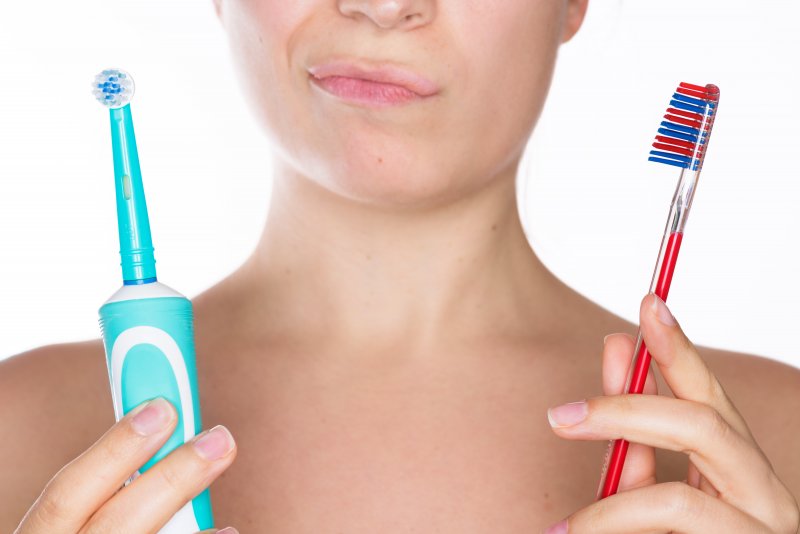
Since you were a child, you have been told that you need to brush your teeth twice and floss once every single day in order to maintain optimal oral hygiene. However, you probably were never told which toothbrush is most beneficial for your smile. There are two main types of toothbrushes available: manual and electric. Read on to learn more from a dentist in Highland Park about the two different types of toothbrushes so you can decide which one is best for you.
Manual Toothbrushes
This is the classic type of toothbrush used for cleaning your teeth and preventing gum disease. Here are a few benefits of choosing this brush:
- Affordable: Manual toothbrushes are easily affordable. You can find them between $1 and $3.
- Accessible: It is super easy to find manual toothbrushes. You can pick one up at the grocery store, gas station, pharmacy, and dollar store. You can even find them in hotel lobbies if you are on the go.
- Control: For sensitive gums and teeth, a manual toothbrush may be a better option. You have full control over the speed and pressure in which you are brushing.
Here are some of the downsides of manual toothbrushes:
- Pressure: When using a manual toothbrush, it is easy to use too much pressure. This leads to damaged tooth enamel, irritated gums, and gum recession.
- Time: It is more difficult to know if you have been brushing long enough because manual brushes don’t come with a built-in timer.
Electric Toothbrushes
Electric toothbrushes have become very popular. Here are some of the reasons why many people prefer them:
- Effective: When using proper technique, a manual toothbrush is sufficient, but it is much easier to get a better clean with an electric one. Oscillating toothbrushes are extra effective at removing plaque and preventing gingivitis.
- Easier: Some technique is involved, but electric toothbrushes do most of the work for you. This is helpful for people who have limited mobility due to issues like carpal tunnel, arthritis, developmental disabilities, and other conditions.
- Less Wasteful: You replace the head of most electric toothbrushes instead of tossing the entire thing. This means less overall waste.
Of course, there are some cons of electric toothbrushes as well:
- Price: Most of the time, electric toothbrushes are more expensive than manual ones. You also need to buy replacement heads.
- Traveling: Since electric toothbrushes are larger than manual ones, they are more difficult to travel with when you have limited space for packing.
Both electric and manual toothbrushes are great options for maintaining excellent oral hygiene, but electric ones tend to be the most effective. By weighing the pros and cons and talking to your dentist, you can determine which one is right for you!
About the Author
Dr. Girish Sandadi is an experienced dentist who began his dental journey in India. He later earned his Doctor of Dental Surgery from the University of Michigan at An Arbor. Currently, he is a proud member of the American Dental Association and the Texas Dental Association. For more information on proper oral hygiene or to schedule an appointment at his office in Dallas, visit his website or call (214) 528-9990.
